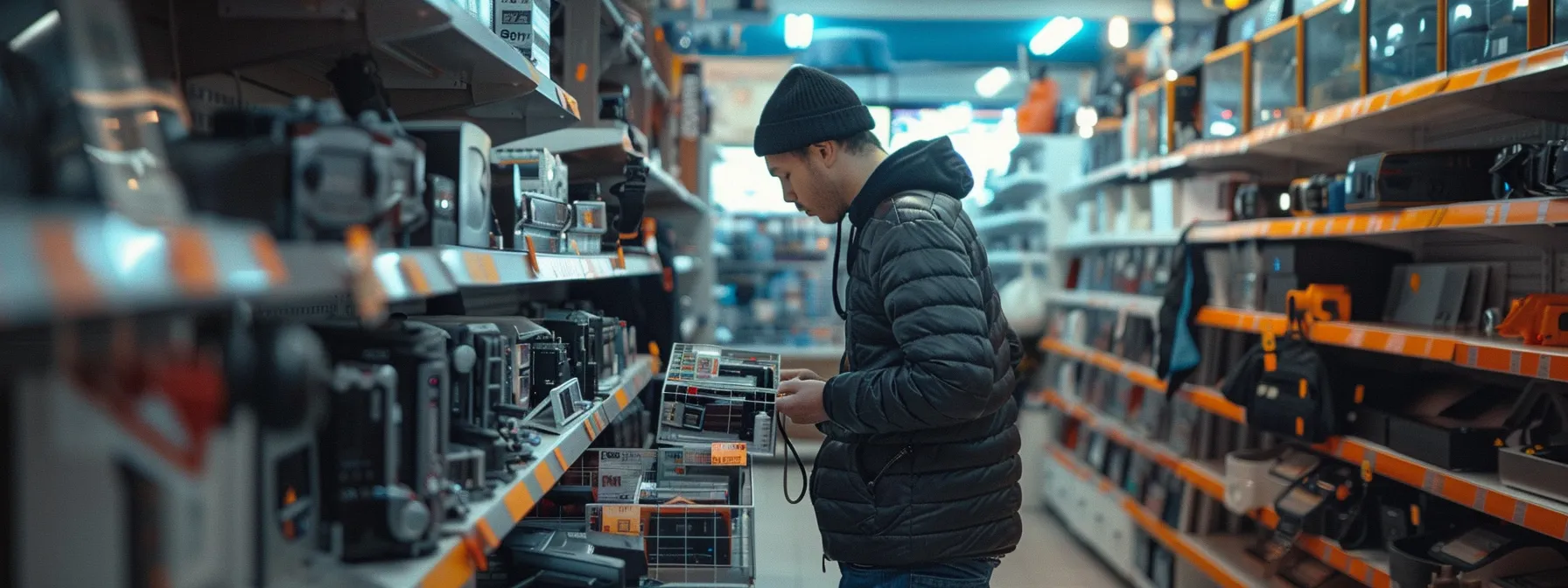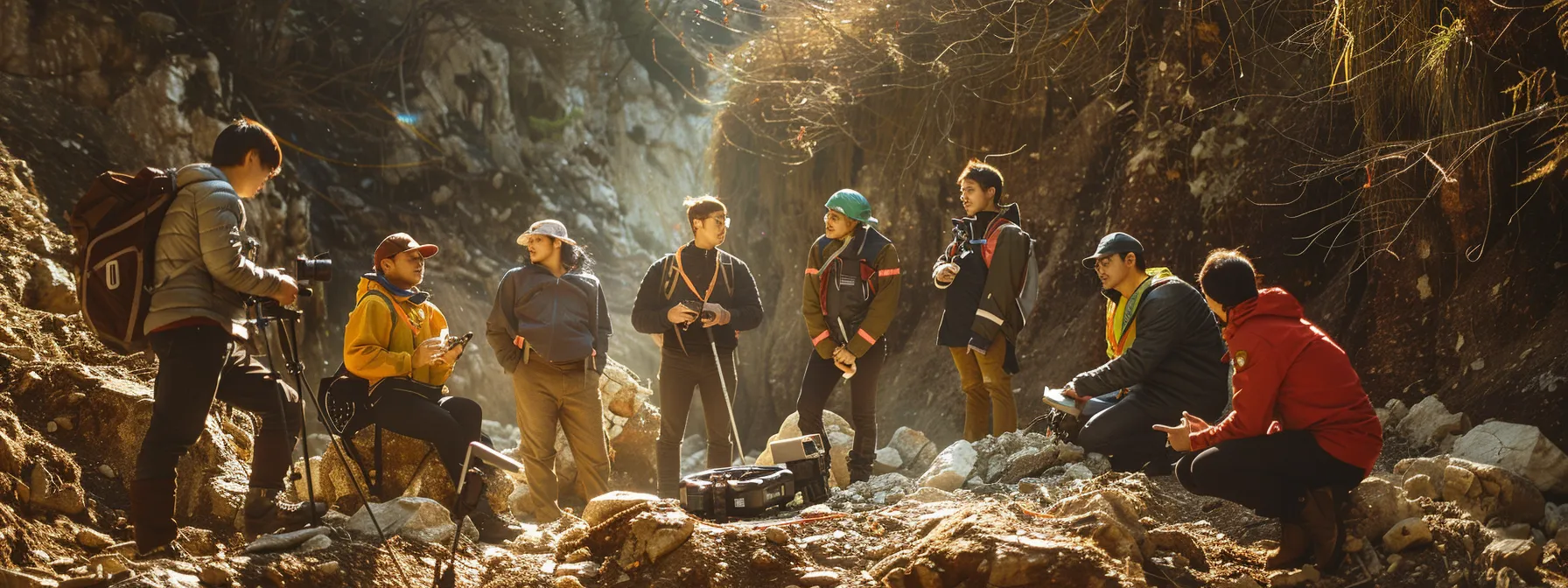

As an enthusiastic treasure hunter, finding the best metal detectors that fit your needs can be overwhelming, especially for newcomers. At LootDetective.com, we aim to simplify your journey by providing blog resources and insights into the best places to metal detect, along with discussions found in the metal detecting forum. With the right information, you can choose the perfect detector and start your adventure into the world of treasure hunting. The excitement of uncovering hidden treasures awaits you, and the right metal detector is your first step. Keep reading to discover essential features, budget tips, and the top starters in the world of metal detecting.
Essential Features to Look for in Your First Metal Detector

When I first started metal detecting, choosing the right detector felt a tad overwhelming. One of the key aspects to consider is adjustable sensitivity; this feature allows you to fine-tune settings based on the ground conditions and soil mineralization I encountered, especially in areas like metal detecting campsites. Discrimination features can also boost your success by filtering out unwanted trash signals, giving you more time to focus on potential relics. Another important factor is the size of the search coil, as it can affect depth and coverage. Comfort matters too; the lighter the detector, the longer I could search without fatigue. Finally, understanding the difference between waterproof and non-waterproof models is essential, especially if your adventures lead you to wet environments. Opting for a single versus multi-frequency detector also impacts performance; multi-frequency machines can handle diverse terrains better, making them a solid choice for beginners like myself. These features make the best metal detectors and help to shape a rewarding experience.
Understanding the Significance of Adjustable Sensitivity
Adjustable sensitivity is a game-changer in metal detection that directly impacts my chances of finding treasure. When I was starting out, I quickly discovered that different areas showcase varying ground conditions, often filled with mineralization or unwanted metals. Having the ability to fine-tune my metal detector means I can optimize my search, avoiding false signals and preserving my energy for the real finds.
- Importance of sensitivity settings in metal detectors
- Adapting to various ground conditions
- Preserving energy during treasure hunting
- Maximizing chances of finding valuable items
The Role of Discrimination Features in Enhancing Hunting Success
As I sharpened my skills in metal detecting, I found that using metal detectors with discrimination features were crucial for enhancing my success rates. These settings allow me to filter out unwanted signals, especially pesky iron targets that have plagued many of my early digs. Even as a newcomer, understanding how to adjust these settings with just the press of a button helped me avoid wasting time on low-value items, making my time in the field more enjoyable and efficient. Choosing a metal detector that balances price and warranty while incorporating strong discrimination features can greatly reduce the learning curve for those just starting out at Loot Detective, the best places to metal detect, and metal detecting forum blog resources.
Importance of Choosing the Right Search Coil Size
When I ventured into metal detecting, I quickly learned that the search coil size is pivotal to my success. A larger coil covers more ground, which is a boon for open areas like fields or beaches where I might be searching for lost items or even gold prospecting. On the other hand, smaller coils are better in tight spaces or areas littered with iron debris since they are more precise and can distinguish targets better, helping me avoid those pesky signals that often tempt me to dig with my shovel.
Finding the right balance for my machine‘s coil size significantly influences my efficiency and success. The specific magnetic field created by the coil also plays a vital role in detecting treasures buried deep in the soil. Knowing when to swap coils has helped me refine my skills, making every outing more productive.
- Understanding the importance of coil size
- Adapting to different searching environments
- Maximizing efficiency while treasure hunting
- Balancing coil size to improve signal detection
Considering Comfort and Weight for Longer Searching Sessions
During my early days in treasure hunting, I quickly realized that comfort plays a big role in how successful I would be on long outings. A lightweight detector, like the Equinox, takes a load off my shoulders, enabling me to search longer without fatigue. With more energy on hand, I can focus better on finding treasures concealed in sand or soil.
Waterproof vs. Non-Waterproof Detectors: Making the Right Choice
Choosing between a waterproof and non-waterproof metal detector greatly impacts my learning curve and versatility in the field. When I first started metal detecting, I often found myself near rivers or beaches where the prospect of uncovering silver treasures in wet sand kept me on my toes. A waterproof unit allowed me to confidently search areas that others might shy away from, opening up exciting opportunities in archaeology and exploration that I might have missed with a standard model.
Single vs. Multi-Frequency Detectors for Beginners
When I first faced the choice between single and multi-frequency detectors, I realized that the right option could significantly influence my treasure hunting adventures. Single-frequency models are often easier for beginners, allowing me to learn the basics without becoming overwhelmed by settings. On the other hand, I found that multi-frequency detectors, while a bit more complex, offered flexibility across various terrains and conditions, making them a practical choice as I progressed in my journey.
After considering the essential features that suit your adventure, it’s time to focus on your budget. Finding quality metal detectors within your price range can lead to rewarding discoveries without breaking the bank.
Setting Your Budget: Finding Quality Within Your Range

Setting a budget for a metal detector has been one of the most crucial steps in my treasure hunting journey. I learned the hard way that it’s all about finding the right balance between price and the features I genuinely need as a newcomer. While it’s tempting to go for the high-end models packed with fancy features, those aren’t always essential for someone just starting. Instead, I focused on identifying the best value detectors that provide reliable performance without breaking the bank. Avoiding the trap of overpriced models helped me invest wisely, ensuring I had the right tools without unnecessary bells and whistles, allowing me to fully enjoy this captivating hobby without financial strain.
Balancing Price With Feature Needs for New Hobbyists
As a newcomer in this exciting hobby, I quickly learned that balancing price with features is vital for a satisfying experience. I focused on finding detectors that offered the essential features I needed, like sensitivity and discrimination, without getting swayed by unnecessary extras that often come with high-priced models. By prioritizing my needs and sticking to a reasonable budget, I ensured I could dive into metal detecting without feeling overwhelmed by costs.
Best Value Metal Detectors for Beginners
As I searched for a metal detector that provided good value for beginners, I came across a few models that stood out to me. The Garrett Ace 300, known for its reliability and user-friendly interface, gave me the confidence to hit the field and start searching right away. Another model, the Fisher F22, impressed me with its lightweight design and solid performance, making it an excellent choice for anyone just starting their treasure hunting journey.
Avoiding the Trap of Overpriced Models With Fancy Features
During my search for a metal detector, I quickly realized how easy it is to get lured in by the flashy features of high-end models. While those bells and whistles can be enticing, they often go unused, especially for newcomers like I was. Instead, I focused on models that delivered reliable performance and essential features, which ultimately enriched my experience without draining my wallet.
By prioritizing functionality over unnecessary upgrades, I was able to hone my skills without the pressure of managing complicated settings or features that didn’t serve my purposes. Assessing what I genuinely needed helped keep my budget in check while ensuring I had a detector that supported my adventures in treasure hunting.
Now that you’ve established your budget, it’s time to put that knowledge to use. Get ready to discover some of the best beginner metal detectors that will kickstart your treasure hunting journey!
Top Picks for the Best Beginner Metal Detectors

As I reflected on my early days in metal detecting, I realized how crucial it was to find the right detector that suited my needs. I’ve come to appreciate the advantages of single frequency detectors, which keep things straightforward and user-friendly. These machines are perfect for newcomers who want to hit the ground running without feeling overwhelmed by complicated settings. Yet, I also discovered that multi-frequency detectors can be a game-changer in diverse environments, providing flexibility I didn’t know I needed until I ventured into different terrains. For younger enthusiasts or anyone seeking a lightweight option, I found that compact models make it easier to enjoy long outings without fatigue. In this section, I’ll review some top picks that cater to these varied preferences, ensuring you’ll be well-equipped for your treasure hunting adventures.
Reviewing Top Single Frequency Detectors for Simplicity
Among my go-to options for single frequency detectors, I found the Garrett Ace 250, 300, and 400 to be a remarkable choice for newcomers. Their straightforward controls were refreshing, allowing me to quickly learn how to utilize its features without feeling overwhelmed. Each outing became a productive exploration, as I could focus solely on the hunt rather than getting bogged down by complicated settings.
Another great option was the Bounty Hunter Tracker IV, which provided simplicity along with solid performance. I appreciated its lightweight design, making it easy to maneuver, especially during extended searches. The clarity of its audio signals guided me toward potential treasures without unnecessary distractions.
Lastly, using the Fisher F4 taught me that even a single frequency machine could offer impressive depth and discrimination. This detector balanced ease of use with functionality, empowering me to engage in deeper searches while still keeping things simple. Having a reliable tool like this made my early treasure hunting experiences enjoyable and rewarding.
Multi-Frequency Detectors: When to Consider Them
As I advanced in my metal detecting journey, I found that multi-frequency detectors offered exceptional versatility for various hunting conditions. These machines could adapt to different terrains, whether I was combing through mineral-rich beaches or searching in highly iron-laden areas. When I wanted to explore diverse environments and increase my chances of unearthing hidden treasures, multi-frequency detectors proved to be invaluable tools that heightened my overall experience.
Compact and Lightweight Options for Younger Enthusiasts
When it comes to helping younger enthusiasts get started in metal detecting, I found that compact and lightweight models make a big difference. These machines are designed for easy handling, ensuring younger treasure hunters can comfortably search for longer periods. I appreciate how these detectors empower new hunters to engage in this hobby without feeling overwhelmed by heavy gear.
- Easy to handle, perfect for younger users
- Lightweight designs reduce fatigue during searches
- Ideal for teaching fundamentals of metal detecting
- Encourages longer sessions and a more enjoyable experience
You’ve chosen your first metal detector and are ready to hit the fields. Next, let’s dive into the different detector technologies available and uncover the key differences between VLF and PI models.
Understanding Detector Technologies: VLF vs PI Models

As I grew more familiar with metal detecting, I encountered two main technologies: Very Low Frequency (VLF) and Pulse Induction (PI). Each has its unique strengths and applications. VLF detectors, with their dual coil system, excel in identifying a wide range of targets, making them perfect for beginners like I was. However, certain scenarios called for the specialized capabilities of Pulse Induction models, which shine in mineral-heavy soils or saltwater environments where VLFs might struggle. Understanding these differences has been pivotal in selecting the right tool for each specific hunt, allowing me to adapt my approach based on the conditions and the treasures I seek.
Deciphering the Differences: VLF Technology Explained
As I navigated through the world of metal detecting, I quickly learned about Very Low Frequency (VLF) technology. VLF detectors are known for their versatility, as they can differentiate between a wide range of metals, which is crucial for beginners learning the nuances of signal identification. The dual coil system in VLF machines enhances their sensitivity, especially in detecting coins and relics buried in various types of soil.
Understanding how VLF technology operates gives me an advantage when determining which areas to search. It provides the capability to adjust settings for ground mineralization, making it easier to improve overall success. VLF detectors are a reliable choice for newcomers looking to refine their skills and expand their treasure–hunting experiences.
When to Choose a Pulse Induction Model Over VLF
When I started exploring more challenging locations, I quickly realized that Pulse Induction (PI) models were my best option. These detectors excelled in mineral-rich soils and saltwater environments where VLFs often struggle to provide clear signals. I found that using a PI detector allowed me to dig deeper and tackle sites where buried treasures often played hide and seek beneath layers of tricky soil composition.
With a solid grasp of detector technologies, it’s time to gear up for your first adventure. Let’s dive into practical tips that will set you on the path to uncovering hidden treasures!
Practical Tips for the First-Time Metal Detector User

As I ventured deeper into metal detecting, I quickly realized that setting realistic expectations is key. Each outing should be viewed as a learning experience rather than a guaranteed treasure hunt. Embracing the idea that practice truly makes perfect has helped me refine my skills over time. Additionally, I discovered the value of connecting with fellow enthusiasts. Joining local metal detecting groups not only provided me with support but also allowed me to learn from their experiences, share tips, and explore exciting new hunting locations together. By combining these elements, my journey in metal detecting transformed into a rewarding adventure filled with knowledge and camaraderie.
Starting Your Journey With Realistic Expectations
When I first stepped into metal detecting, my excitement sometimes overshadowed my expectations. I had to remind myself that treasure hunting is often more about the journey than the immediate rewards. Each outing is a chance to learn and improve skills, and with that mindset, I found joy in every beep of the detector, whether it signaled a valuable find or just another piece of junk.
Learning the Basics: Practice Makes Perfect
As I dove into metal detecting, I soon realized that the path to success is paved with practice. Each time I ventured out, I focused on honing my techniques, familiarizing myself with different settings, and learning how to interpret my detector‘s signals.
Through consistent practice in diverse locations, I developed a better understanding of both the tools and the land. It helped me to refine my approach, turning every outing into a valuable learning experience:
- Experimenting with different settings on my detector.
- Testing out various coil sizes in different terrains.
- Reflecting on my finds, regardless of their value.
Each hunt contributed to my treasure hunting knowledge and boosted my confidence in the field.
Finding Your Community: Joining Local Metal Detecting Groups
Joining local metal detecting groups has been a game changer for me. Connecting with fellow hobbyists not only provided valuable insights into techniques and hunting locations, but it also created a support system where we could share our experiences and discoveries. Engaging with this community added a social dimension to my adventures, turning each outing into a chance to learn and enjoy the thrill of treasure hunting together.
As you gain confidence with your metal detector, new treasures await just beneath the surface. Let’s dive into ways to sharpen your skills and uncover even more hidden gems.
Enhancing Your Metal Detecting Skills Over Time

As I continued my journey in metal detecting, I began to appreciate the significance of refining my skills beyond the basics. Gradually, I ventured into more advanced settings and features that my detector offered, and this opened up new possibilities for finding hidden treasures. I also realized that the location where I searched played a crucial role in my success; dedicating time to scout promising areas made a noticeable difference in my results. Most importantly, I learned how to interpret the signals my detector produced, allowing me to distinguish between valuable finds and common junk. This combination of skill enhancement, strategic location scouting, and signal interpretation helped elevate my treasure hunting adventures to a whole new level.
Graduating to More Advanced Settings and Features
As I became more comfortable with my metal detector, I started to experiment with the advanced settings it offered. Adjusting the sensitivity and threshold levels allowed me to fine-tune my searches, which improved my ability to identify valuable targets buried at greater depths. I found that embracing these features not only expanded my skills but also added a depth of excitement to each hunt, making me feel more in control of my treasure–hunting adventures.
The Importance of Location Scouting in Metal Detecting Success
When I first realized how critical location scouting was, it transformed my approach to metal detecting. Instead of randomly picking spots, I began looking into local histories, researching old maps, and talking to locals about where people used to gather. Focusing on these promising areas drastically increased my chances of unearthing hidden treasures, turning my outings into much more fruitful adventures.
How to Interpret Signals and Find More Treasure
Interpreting signals from my metal detector requires a keen ear and attention to detail. Each beep or tone carries specific meaning, such as high-pitched signals often indicating coins or jewelry, while lower tones might suggest iron or other unwanted items. With time and experience, I learned to analyze the responses my detector gave me, allowing me to distinguish between valuable finds and mere distractions.
Analyzing these tones and correlating them with my digging results transformed my confidence and skill. I found it helpful to maintain a notepad where I could record my discoveries, associating specific signals with particular items. This strategy refined my interpreting abilities and created a more productive treasure–hunting experience for me.
In summary
Finding the ideal metal detector is crucial for newcomers to ensure a rewarding treasure hunting experience. By focusing on essential features like adjustable sensitivity, discrimination settings, and coil size, beginners can maximize their potential for success. A lightweight and comfortable design enhances longer search sessions, while understanding detector technologies helps in selecting the best option for various terrains. Prioritizing value over flashy features enables new users to enjoy their journey without financial strain or unnecessary complexity.


